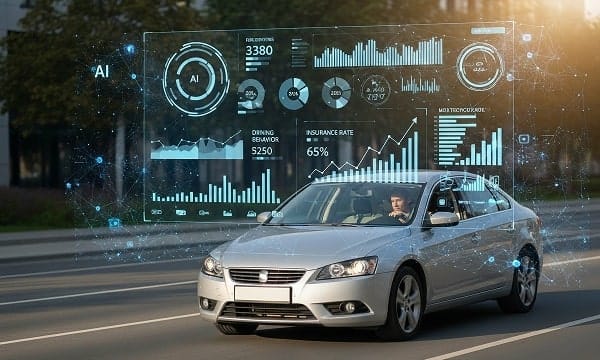
Artificial intelligence is changing how car insurance is priced — and depending on how you drive, shop, and even browse online, it could cost you.

{sidebar}
The rise of AI in auto insurance underwriting and claims is accelerating, with many major insurers now using machine learning models to evaluate risk, set premiums, and flag claims for fraud. But while that can mean faster quotes and quicker claims processing, it also raises questions about fairness, transparency — and what drivers can do to stay ahead.
AI is influencing more of the pricing process than most consumers realize. In many cases, policy decisions are being shaped before a human even looks at your file.
That shift is happening as car insurance rates remain near record highs. The average premium rose over 12% in the past year, according to the Bureau of Labor Statistics’ Consumer Price Index for January 2025. Experts say AI could widen the gap between drivers who save — and those who overpay.
Here’s how AI is changing the insurance landscape — and what you can do to protect your wallet.
AI is changing how insurers evaluate you — and not always in ways you can see
Traditional insurance pricing uses broad categories: your age, ZIP code, driving record, and vehicle type. But AI models rely on thousands of data points — including driving behavior from apps and sensors — to make predictions about your risk level.
That can lead to more personalized pricing. But it can also result in unexplained premium hikes, even if your driving habits or personal details haven’t changed.
Some experts say insurers are experimenting with how and when people search for quotes — such as what time of day or what device they use — to subtly adjust pricing. While insurers argue these models help better match risk, consumer advocates warn that AI can unintentionally replicate biases hidden in the data it’s trained on.
Don't let AI box you in - comparison shopping still works
Even as insurers use AI to dynamically set rates, shopping around is still one of the best ways to save. Algorithms might price you differently across companies — even if your personal profile is identical.
Insurance pricing analysts note that companies rely on different models, so a driver quoted $2,000 by one insurer might get a $1,400 quote from another — even for the same coverage.
“Right now, the best way to control the cost of auto insurance is to control things that are in your power,” said Dustyne Bryant, Director at The National Alliance for Insurance Education & Research.
It’s smart to get new quotes every six months or at renewal time. Use comparison tools that let you see multiple options quickly — just make sure to match coverage levels, and check that you’re not sacrificing key protections just to cut your monthly premium.

What to avoid: Letting AI models nudge you into bad coverage
Some insurers are now offering "smart coverage suggestions" that use AI to recommend changes — such as lowering your liability limits or dropping extras like roadside assistance.
These suggestions may lower your premium, but they come with trade-offs. Reducing coverage could leave you vulnerable in the event of an accident, theft, or natural disaster.
Consumer advocates say drivers should be cautious when accepting automated recommendations. AI is a tool — not a substitute for human judgment, especially when it comes to protecting your finances.
Bottom line: AI is here to stay — but so are ways to beat the system
AI is already shaping how car insurance is priced, and that trend is only going to accelerate. But you’re not powerless. Shop around, understand your coverage, and don’t accept every automated suggestion at face value.
With a little effort, you can outsmart the system — and keep your premiums in check.
